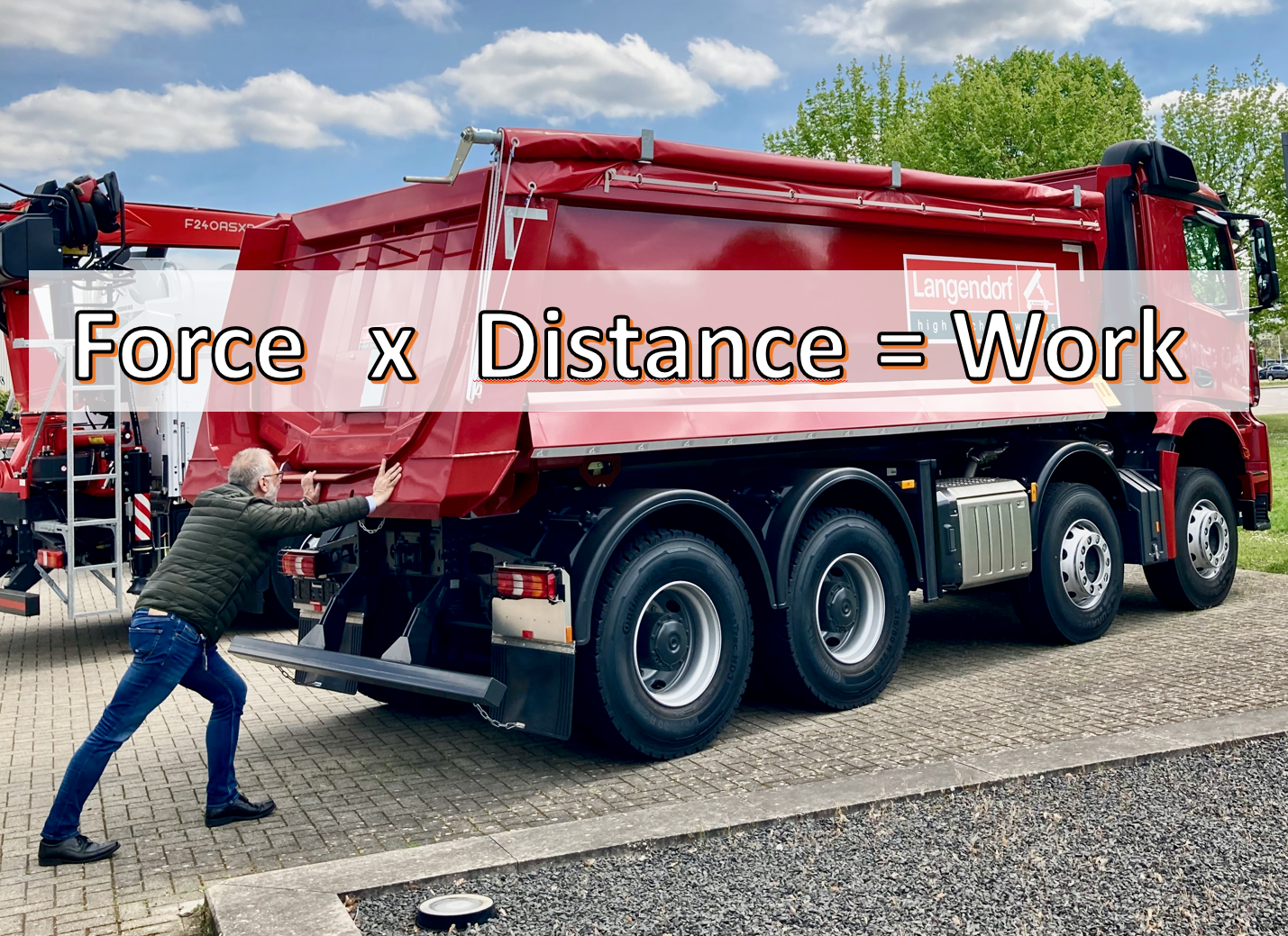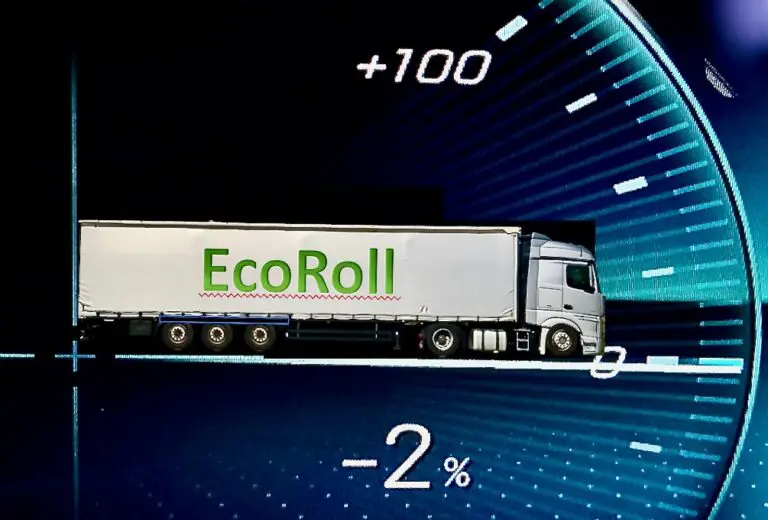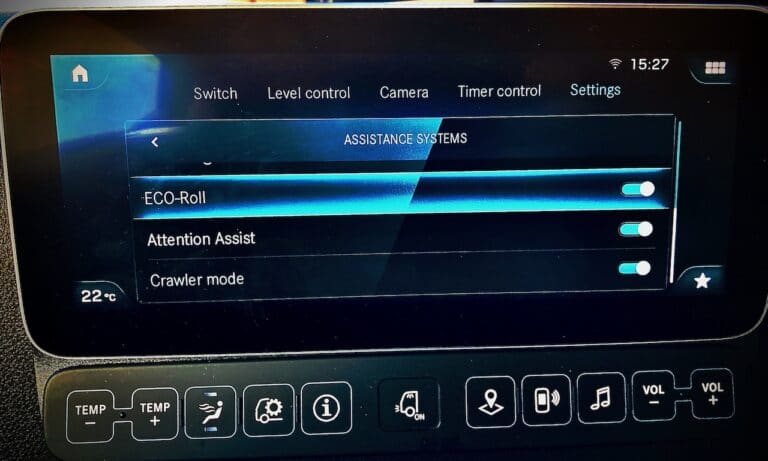Want to Know the Secret to Saving Fuel? Less Work Is the Key!
Well, duh. If I don’t go to work and the truck stays parked in the yard, it obviously doesn’t use any fuel.
As you might rightly guess, there’s much more to the headline of this article than just this simple banality.
This article deals with the basics of fuel consumption and thus the starting points for reducing consumption.
You will learn why fuel consumption is reduced when you arrive at your destination with less physical work (force times distance).
Additionally, information on how to minimize this physical work is provided.
I am going to explain how the physical terms force, work, and energy are related to fuel consumption.
This field of physics forms one of the core foundations of our business. Therefore, it makes perfect sense to familiarize yourself with this theory.
My explanations may sound familiar since we all learned these concepts in school. Because of this, I won’t just dive into the pure theory. Instead, I’ll explain the practical connections between these concepts and transportation practices.
Once you understand these basics, it will be much easier to master the vehicle technology, driving techniques, and processes that build on them.
It’s not rocket science, believe me. You will understand it!
You’ll be able to recognize when you’re dealing with energy and work in practical use. From this understanding, the improvement measures we discuss will seem logical and easy to comprehend.
Consequently, you will then be able to identify and maximize the full potential for improvement.
This article is the foundation for all future articles on optimizing fuel consumption! So please take the time to read it.
What exactly is work?
We all have an idea of what “work” can be.
- Making phone calls,
- thinking,
- discussing in meetings,
- assigning tasks to employees,
- sitting behind the wheel, looking at the road, and stepping on the gas,
- loading and unloading,
- changing tires,
- … and much, much more.
All of these activities have one thing in common: you can get paid for them.
If you google the term “work,” you’ll find a variety of different explanations.
I define “work in general” as follows:
Work is the effort that must be made to achieve a result that is paid for.
Efforts that do not serve the purpose of earning money, such as the family hike on the weekend, are not considered work.
Since efforts in the business environment usually cost money, the goal is to reduce the necessary efforts so that as much of the remuneration as possible remains as profit.
However, I mentioned in the introduction that we are going to discuss physical fundamentals here. This explanation of work does not sound physical at all.
Therefore, let’s put it aside for a moment and look at the physical definition of ‘mechanical work’, which is as follows:
Mechanical work is done when an object is moved or deformed by a force.
https://www.lernhelfer.de/schuelerlexikon/physik/artikel/mechanische-arbeit
We’d rather prefer to concentrate on the variant with the movement, which will get us to our destination.
Let’s leave out the deformation part, I don’t want to talk about accidents here today.
As usual in physics, there is of course also a formula for this:
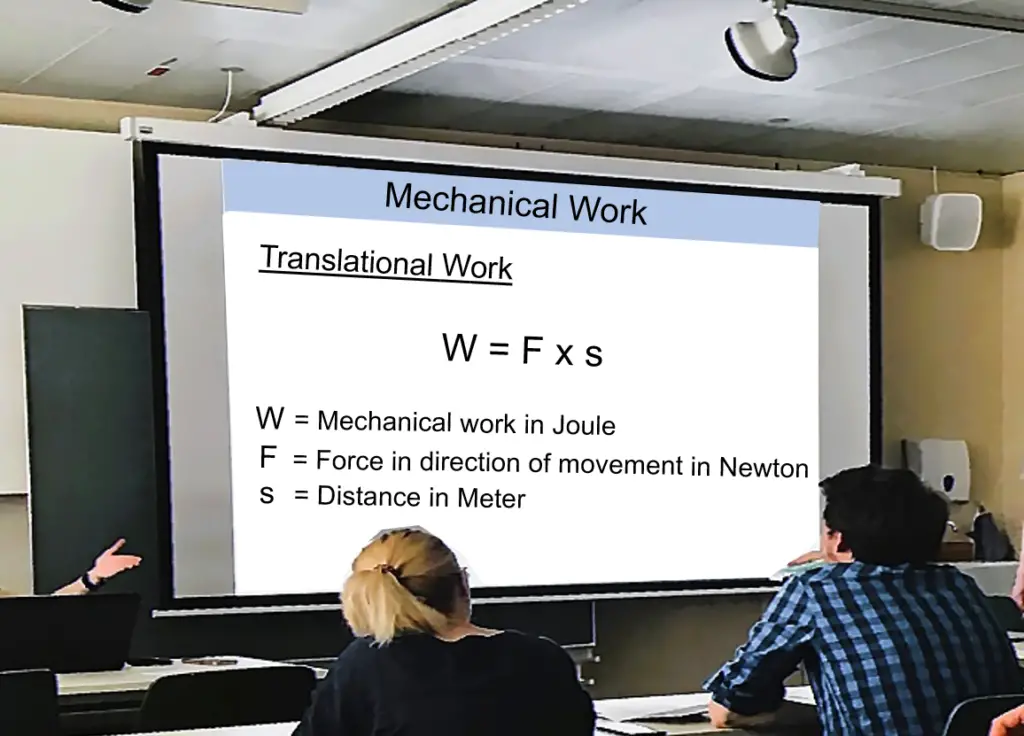
The unit of measurement for work is the Joule. Joule is the same as Newton meter, i.e. Newton, the unit of force, and meter, the unit of distance. It’s logical. Alternatively, the Kilowatt Hour (kWh) is also possible; we know this unit of measurement from the billing of electrical energy. But more on that later.
So when it comes to reducing work, there are two levers:
We will look at this in detail in a moment.
Let’s stick with the concept of work for a moment.
Even when we focus on physical, mechanical work, it’s still an effort that is made to achieve a paid result.
But what does this have to do with fuel consumption?
Let me put it this way:
Work is created when fuel is burned in the engine and a driving force is generated that is used to propel the vehicle over a distance.
Here we have the answer to the question in the headline:
If a smaller driving force is required or the distance is shorter, then this means less work. As a consequence, less fuel has to be burned for less driving force (in terms of size or distance).
Of course, that’s not all there is to know about this topic. So let’s delve further into the matter.
Transport is mechanical work in its purest form.
Transportation involves moving a payload (cargo, people, etc.) from a starting point to a destination.
As a rule, a means of transportation (e.g. vehicle, train, ship, airplane) is used for this purpose, which carries the goods and generates the forces required for transport.
A truck performs mechanical work when it transports a load of beer crates from the brewery to the store.
The truck does more work the more force it uses and the further it travels.
Only the force component acting in the direction of motion may be used to compute the work.
In the case of a vehicle, this is the driving force.
You must not use the weight of the payload, e.g. the crates of beer, to calculate the transportation work!
There is very little movement in the direction of the road, which is where the weight force points downward.
The relevant path in the direction of this vertical force component is the suspension travel of the vehicle suspension and the tires. It is only a few centimeters.
In this direction, the force is transferred directly from the vehicle to the road without much work.
Let’s calculate this as an example:
Work in the vertical direction:
- 400 kN Gross Combination Weight (40 tons)
- 0.1 m suspension travel (10 cm)
- 400 kN x 0,1 m = 40 kJ
Work in the horizontal direction (direction of travel):
- 4 kN driving force (rounded driving resistance for 40t gross combination weight on flat terrain at a constant 80 km/h)
- 100 km distance traveled
- 4 kN x 100 000 m = 400 000 kJ
We can therefore neglect the work in the vertical direction. The action is in the direction of travel.
To be entirely correct, I should have actually said “wheel load force” instead of “weight force”.
On inclined roads, the weight force is divided into a wheel load force and a downhill driving force.
The wheel load force is directed toward the ground, while the downhill driving force acts along the road.
On typical road inclines, the wheel load force is always significantly greater, so let’s simplify things and accept it for now.
I will elaborate on the downhill driving force later, as it has a significant impact on driving resistance and thus on fuel consumption.
More about this in “Anticipatory Driving”, “Forces on the Vehicle”, and “Driving Resistance”.
When transporting, the greatest movement occurs in the direction of travel. Therefore, we need the driving force acting in the direction of travel to calculate the transport work.
The relevance of the force acting in the direction of travel has been known since our ancestors tried to drag the mammoth they had hunted back home.
Hunting and transporting mammoths was the work of early humans.
Because it was so arduous, they invented the wheel to transport the mammoth with a cart. This reduced the driving force needed and made them less tired with less work.
Alright, fun aside 😊:
So, let’s take a look at the forces next.
By the way…
If you relate transport work to time, it becomes transport performance.
I will cover this topic in the article about the relationship between performance and fuel consumption.
Force has a direction and that makes a difference.
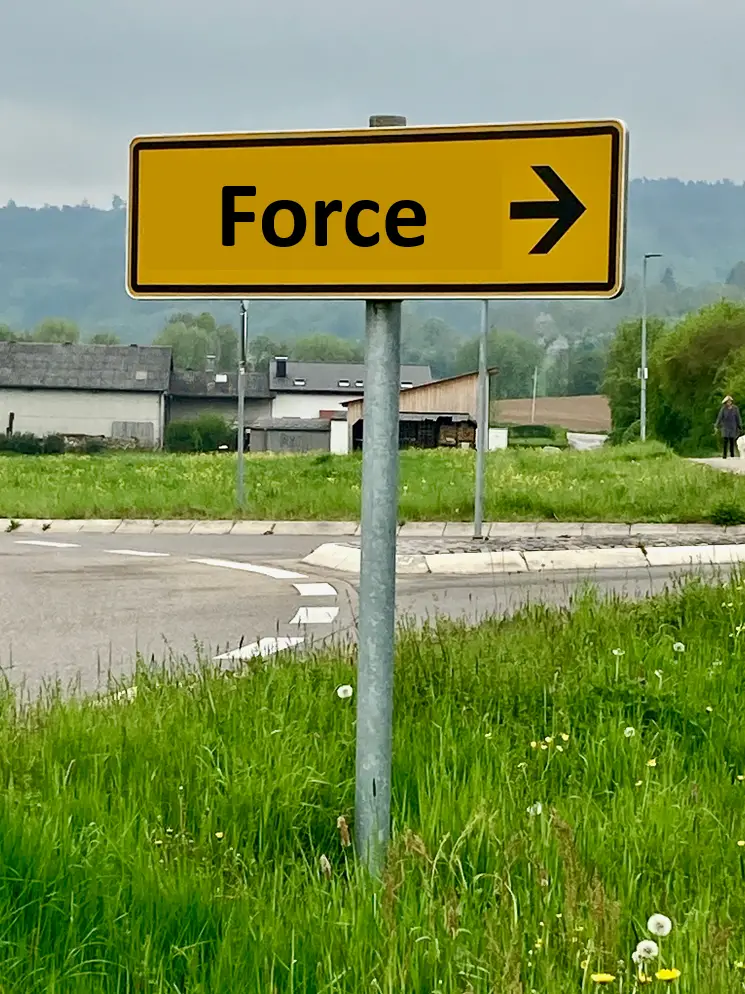
Force is a physical entity that has a direction!
You experience this every time you open a door. Sometimes you have to push, and sometimes you have to pull, depending on which door it is.
Even with the same amount of force, the effect is different depending on the direction. In one direction the door opens, in the other direction it stays closed. (You can read about the physical principles of forces in a future article).
In one direction, the operating force meets an overwhelming counterforce on the door frame. The door does not move, it remains closed and you cannot get through.
If you reverse the direction of the force, only the friction in the hinges and the inertia of the door will oppose the operating force. If you apply enough force, the door will open.
The driving of a truck is similar to this second situation at the door.
The effect and arrangement of forces is a very important basis for understanding the physical processes that take place during driving.
Every force has its counterforce, even the driving force!
The magnitude of the driving force is determined by the magnitude of the forces with which it is in equilibrium.
All forces are always in equilibrium! As soon as an equilibrium of forces is disturbed, another force immediately appears to restore the equilibrium, or the force that is not needed disappears.
If the drive force is to be reduced, the forces that counteract the drive force must be reduced.
The maximum available engine torque only determines the maximum driving resistance that can be handled. This is where the speed limit is reached.
Driving force and driving resistance
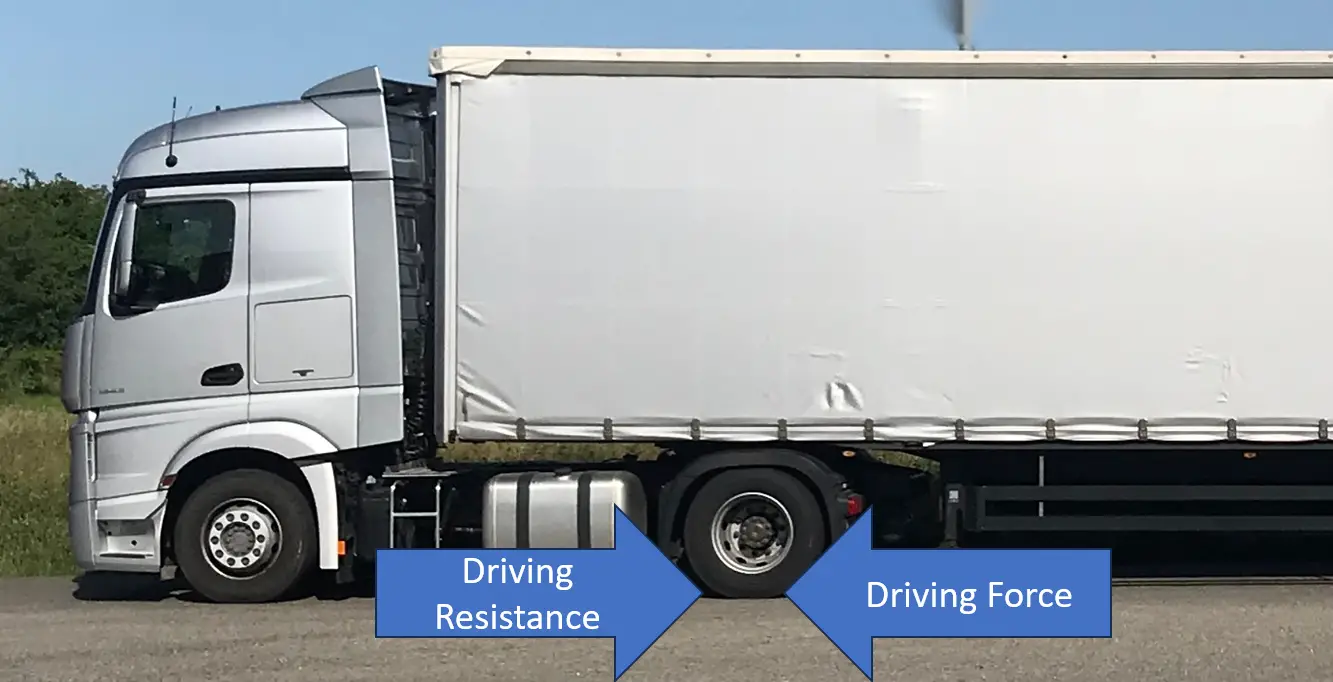
If the drive force is high enough, the vehicle moves at a constant or increasing speed.
How big ‘big enough’ is depends on the driving resistance. There can also be a balance between driving force and driving resistance when stationary. Think of the first moment when starting off.
Driving resistances are forces.
The sum of the driving resistances forms the counterforce to the driving force and is in equilibrium with it!
There are exactly 4 driving resistances: rolling resistance, air resistance, gradient resistance and acceleration resistance.
What does this mean for the answer to our initial question?
If the driving force is less for the same distance, less work is required. Less work means less fuel consumption.
For this reason, the reduction of driving resistance is one of the main levers of fuel consumption optimisation. That’s so much stuff, I could write my own book about it.
But don’t worry, you don’t have to buy a book. You will gradually find the relevant information in the “Optimize consumption” category. And if you can’t find the answer to a question, write it in the comments below and I’ll answer it to the best of my knowledge.
And of course I will explain the whole subject of the forces on the truck and the driving resistance in detail in separate articles.
Driving force and braking force
What happens to the mechanical work when braking forces are applied?
Braking forces are applied intentionally by the driver if the driving resistance is not sufficient to reduce the speed of the vehicle to the desired level.
In a way, I could say that the braking force is a kind of artificially generated driving resistance.
The braking force also reduces the work. However, this does not save fuel, because in situations where the brake is used, the engine does not provide any drive power.
The opposite is the case. Avoiding braking saves a lot of fuel. This topic is so important and wide-ranging that it deserves several articles of its own. One of these articles deals with anticipatory driving, another with ecoRoll.
Driving force and friction force
Unfortunately, the longitudinal movement of the vehicle on the road is not the only movement that occurs during the journey to the destination.
In order to transfer the power from the combustion chamber in the engine to the drive wheel during the journey, many drivetrain components have to move. Apart from the piston, which moves in a straight line, these are all rotary movements.
Whenever parts move, frictional forces occur and slow down the movement.
Just like the driving resistance, the frictional forces also counteract the movement and therefore cause additional power requirements.
To put it another way:
A rotary movement is referred to as rotational work. It is added to the translational work of the vehicle, and therefore additional chemical energy (fuel) must be invested.
Any reduction in frictional forces leads to a reduction in rotational work and thus to fuel savings.
This is another fundamental aspect of fuel consumption, which I will discuss in many more articles.
In this context, please remember the term ‘efficiency’, because this is about improving efficiency.
The shortest route is not always the best.
In addition to force, there is another factor at work: the distance. Let’s take a quick look at this too.
The shortest distance between two places is as the crow flies – a straight line.
Do we simply drive as the crow flies to our destination and the work is minimal?
Using the straight line is only possible for airplanes.
But not even airplanes always fly the shortest route to their destination.
A truck certainly can’t. It only has the option of travelling the road connection that comes closest to the route, as the crow flies.
Important to note:
The route influences the required drive force:
These and many other factors cause an increased drive force requirement, which may turn the positive effect of a shorter distance into the opposite.
Or to put it the other way round:
It may make sense to drive a longer route if the power requirement is so much lower that the work is less.
In any case, meticulous and carefully considered route planning is one way of optimizing work and therefore fuel consumption.
There is one point where you need to be careful:
So now we know what mechanical work is, let’s look at energy next.
How are work and energy related?
What is energy?
Energy is the ability to perform mechanical work, release heat, or emit light.
https://www.lernhelfer.de/schuelerlexikon/physik/artikel/energie
In other words: No energy, no mechanical work! If there is no energy, none can be converted, and therefore no work can be done.
For a vehicle to operate, it must be supplied with energy forms that can be converted to perform work.
A little learning aid
Imagine energy as a liquid that is stored in different tanks.
All the tanks are connected by pipes. The tanks themselves represent the different forms of energy.
If you increase the level in one tank, the level in the other tanks will inevitably decrease. (This is stated by the law of conservation of energy.)
You can think of mechanical work and heat as pumps that transfer the liquid from one tank to another.
The “mechanical work” pump is driven by force.
The “heat” pump is driven by a temperature difference.
I hope this little example will help you when we take a look at the energy flows shortly.
But first, we need to examine the different forms of energy.
Which forms of energy are involved in transportation by vehicle?
Chemical energy
When we talk about energy concerning vehicles, we immediately think of fuel.
The fuel used in vehicles includes diesel, gasoline, or combustible gases such as propane, bio, or natural gas. All these fuels contain chemical energy.
The energy form “chemical energy” provides a comfortable way to power a vehicle. It is comfortable because refueling is quick and easy.
Diesel is incredibly popular because it contains a high amount of energy in a small volume with little weight.
It allows you to carry a lot of energy for a long journey. With diesel, you can drive very far without needing to refuel. Other fuels simply can’t compete with that.
Electrical energy
In the case of a vehicle with a battery-electric drive, the form of energy filled in is electrical energy.
The most electrical form of storage for electrical energy is an electrical field. Capacitors are used for this purpose. Today, capacitors are not technically capable of absorbing the amount of energy required for driving.
Batteries are common. When batteries are charged, chemical reactions take place at the electrodes. A battery therefore also stores chemical energy. When discharging, however, it returns electrical energy without any problems and with minimal losses.
We don’t often think about what happens inside the battery when we’re putting electricity in and taking it out.
Motion is energy
Did you know that movement is also a form of energy?
Movement means an object possesses energy of motion, known as kinetic energy in scientific terms.
We also commonly refer to kinetic energy as inertia or momentum.
The truck itself is an energy storage device. It has a mass. If it also has a speed, then it is charged with kinetic energy.
During transportation, the aim is to charge the truck with kinetic energy and lose as little of it as possible.
It would be best if the energy from the fuel could be completely converted into kinetic energy.
Unfortunately, the world is not set up like this. There are other forms of energy that divert a significant proportion of fuel energy to themselves without us being able to prevent it.
Energy from height
Due to its mass, the truck can store another form of energy. It is the positional energy, also known as “potential energy”.
If you drive up an incline, the truck’s distance from the center of the Earth increases, and so does its potential energy.
Force is, of course, also required to move the truck up the hill.
A truck can give back kinetic and positional energy. The only problem is where to put it.
In the most unfavorable, but unfortunately very common case, they are converted into the next form of energy.
Thermal energy
Anything that has a temperature has thermal energy. It is also called “internal energy”.
If you look at it more closely, it is the kinetic energy of the molecular particles in any given substance.
If heat flows into an object, its temperature rises.
Whenever there is a temperature difference between materials, it is equalized by heat transfer. This happens all by itself.
However, this is often undesirable and the engineer then tries to prevent heat from flowing by insulating.
In other cases, it is necessary to increase the rate of heat transfer to keep temperatures below a certain acceptable limit. This is called cooling.
All the fuel we put into the vehicle sooner or later ends up as heat in the ambient air. We’ll see why in a moment.
Vehicles are energy-conversion machines
A vehicle is a machine that converts energy stored in fuel or batteries into motion for the transport of loads.
Vehicles with electric drives are not yet very common. Nevertheless, I am already including them. I am firmly convinced that battery electric vehicles will soon be seen in significant numbers on our streets.
For a vehicle to be able to transport goods, it must possess certain energy.
In the following section, I will explain what energy is in the vehicle, how it gets in, and why it disappears from the vehicle.
In this article, I explain the processes in a vehicle with a combustion engine. In principle, it is the same with an electric drive, with three important differences:
What happens during energy conversion while driving?
So far, we’ve explored what work is and the different forms of energy.
Now, let’s take a closer look at the relationship between work and energy—because understanding this connection is key to reducing fuel consumption. This is precisely where energy losses occur.
In the following sections, I will examine common driving scenarios and explain how energy flows in each case.
While I’ll describe the direction of energy flow, it’s important to remember that energy transfer follows a pull principle: the amount of energy entering a system is always dictated by how much exits in the next step.
In other words, if you want to save energy, you need to focus on the end of the chain.
This concept will become clearer as we go along. So, let’s start with the first scenario—accelerating from a standstill.
Acceleration and constant speed driving
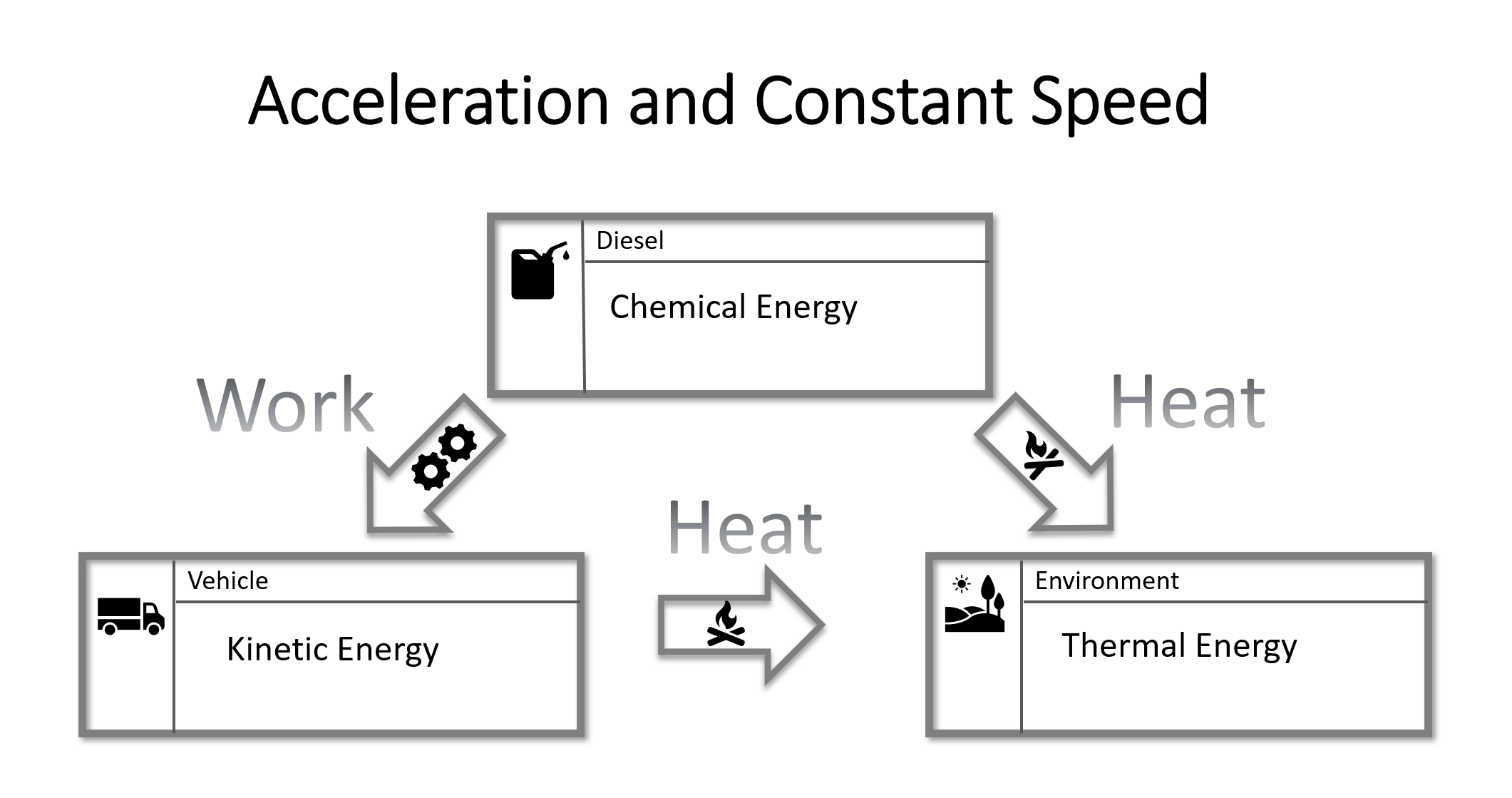
During the acceleration phases and while driving at a constant speed, chemical energy is converted into kinetic energy of the vehicle and into thermal energy of the ambient air.
This is how it works:
When the vehicle is in motion, rolling and air resistance always slow it down. These two driving resistances reduce the kinetic energy of the vehicle by transferring heat to the surrounding air.
The air resistance heats the air directly.
The rolling resistance first heats up the tire, which then cool down by releasing the heat into the ambient air.
If the speed and thus the kinetic energy of the vehicle is to remain the same, this energy loss must be replaced by mechanical work.
The source energy for this work is the chemical energy contained in the diesel, which is reduced as a result.
If you increase the speed, this is counteracted by an acceleration resistance. It increases the work, but the energy remains in the vehicle as increased kinetic energy.
The chemical energy invested in higher speed is not lost until the speed drops again.
In both cases, chemical energy is converted into another form of energy (kinetic energy) by combustion, which always generates heat.
This heat is dissipated directly from the engine into the environment.
To ensure that this heat does not cause the vehicle’s components to become so hot that they are damaged, cooling systems are active, which quickly transfer the heat to the ambient air. This is bad for energy consumption, but cannot be avoided.
These energy flows occur similarly with electric trucks. Instead of diesel, you have to use batteries, and instead of chemical energy, you have to use electrical energy.
Electric drives generate significantly less waste heat because the energy conversion does not involve combustion. However, they still need to be cooled.
Possibility to reduce consumption:
Drive uphill
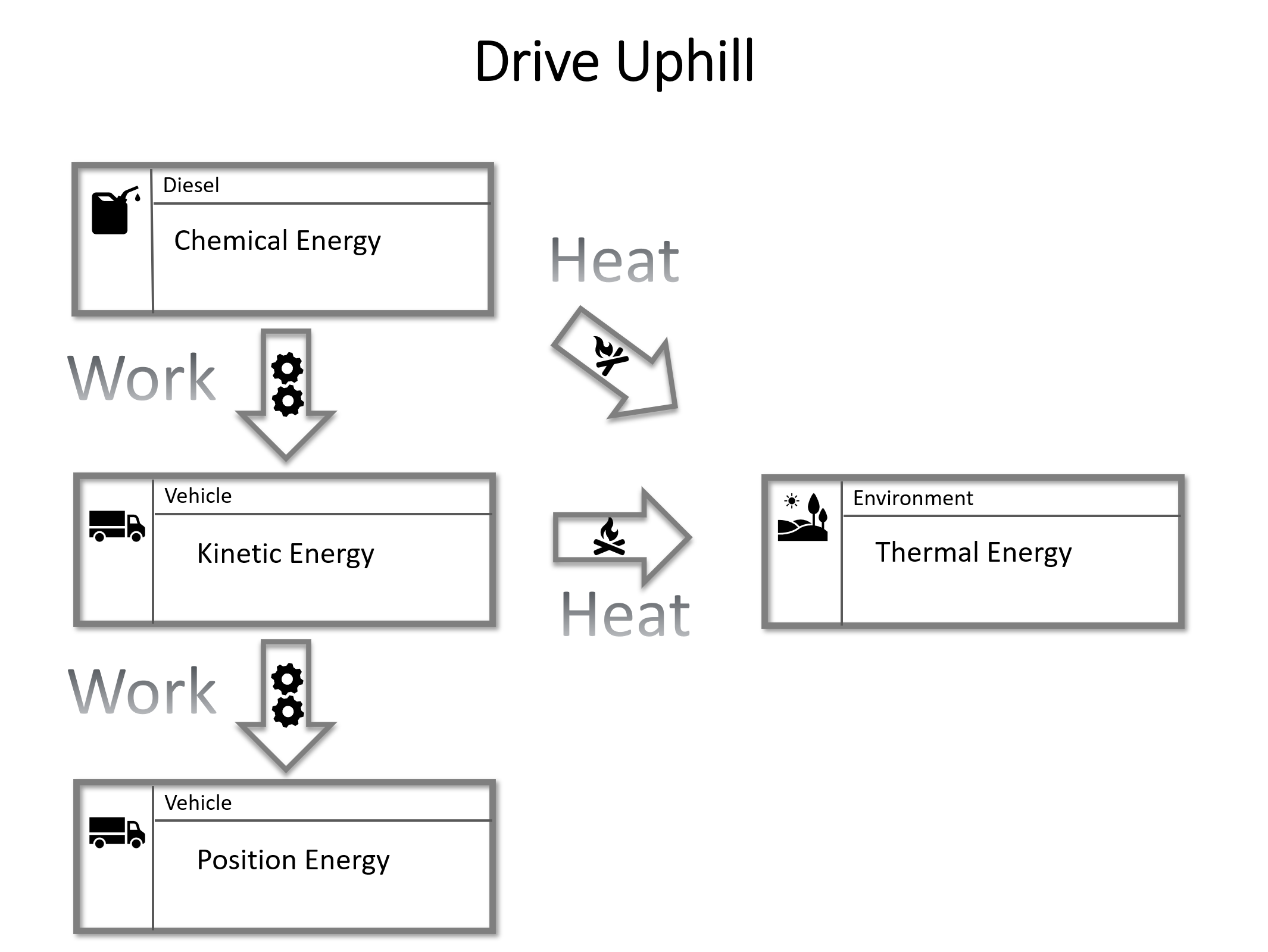
If the vehicle is travelling up an incline, the geographical altitude at which the vehicle is located increases. The positional energy of the vehicle increases.
The source of this energy is kinetic energy.
You know how the vehicle slows down on a hill? Kinetic energy is converted into potential energy. No conversion machine is needed, it just happens without any loss.
But since you don’t want to lose speed, you have to refill the kinetic energy from the chemical energy.
The outflow of chemical energy, i.e. the fuel consumption, therefore increases significantly on hills, because in addition to the rolling and air resistance, the uphill resistance also extracts the kinetic energy.
Possibility to reduce consumption:
Drive downhill

If the vehicle rolls down a hill, the height decreases, and the positional energy of the vehicle decreases.
This positional energy inevitably transforms into kinetic energy. The vehicle speeds up.
For safety reasons, you cannot increase the speed indefinitely. The kinetic energy must therefore not exceed a maximum value. You must convert this excess kinetic energy into other energy.
To do this, you use the braking devices installed in the vehicle. Primarily the engine brake and the retarder.
In vehicles with an internal combustion engine, only the thermal energy of the environment is available for energy dissipation. Kinetic energy cannot be converted back into diesel. This energy is irretrievably lost.
Electric vehicles, on the other hand, have the option of converting excess kinetic energy back into electrical energy and storing it in the battery.
Possibility to reduce consumption:
Stopping
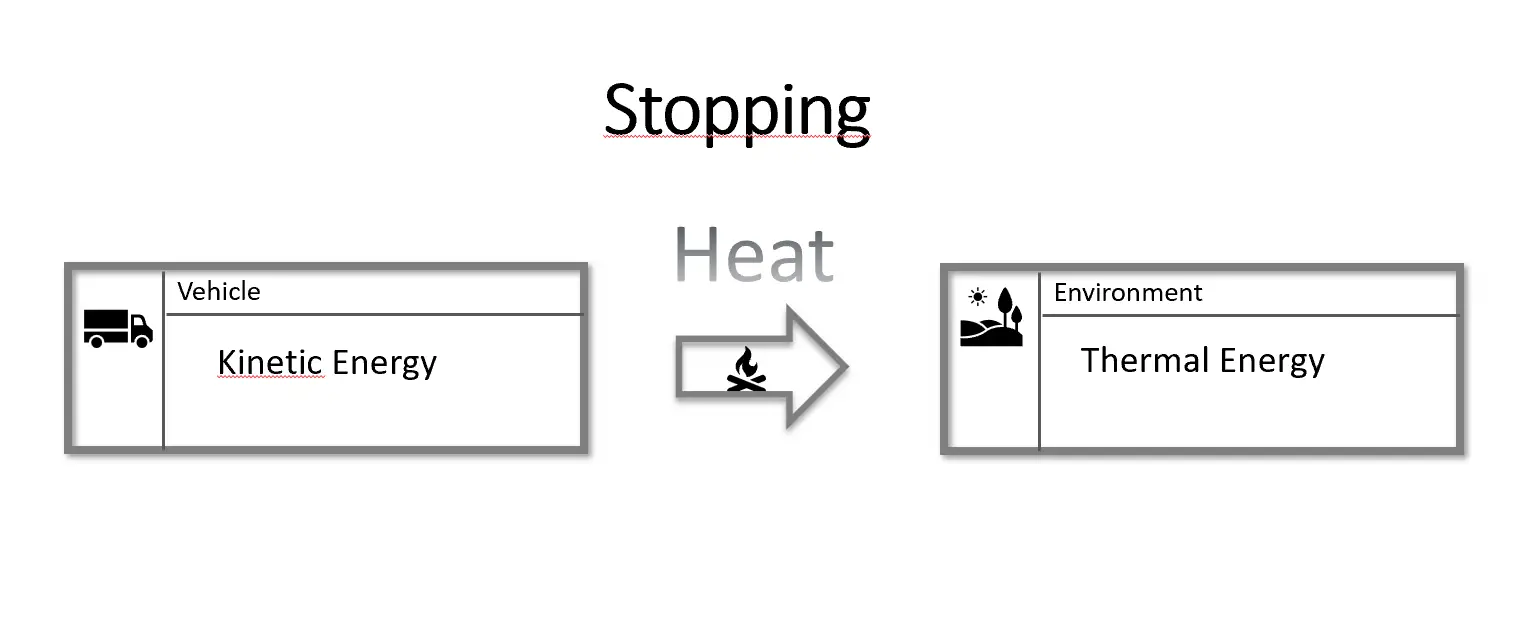
The story of stopping is quickly told.
If the vehicle is to be brought to a standstill, the kinetic energy must drop to zero.
You do this by coasting, braking, or recuperating in the case of electric vehicles.
Possibility to reduce consumption:
Summary
Please write in the comments how you liked the article, what you liked and what I can improve so that I can write even better articles in the future.

